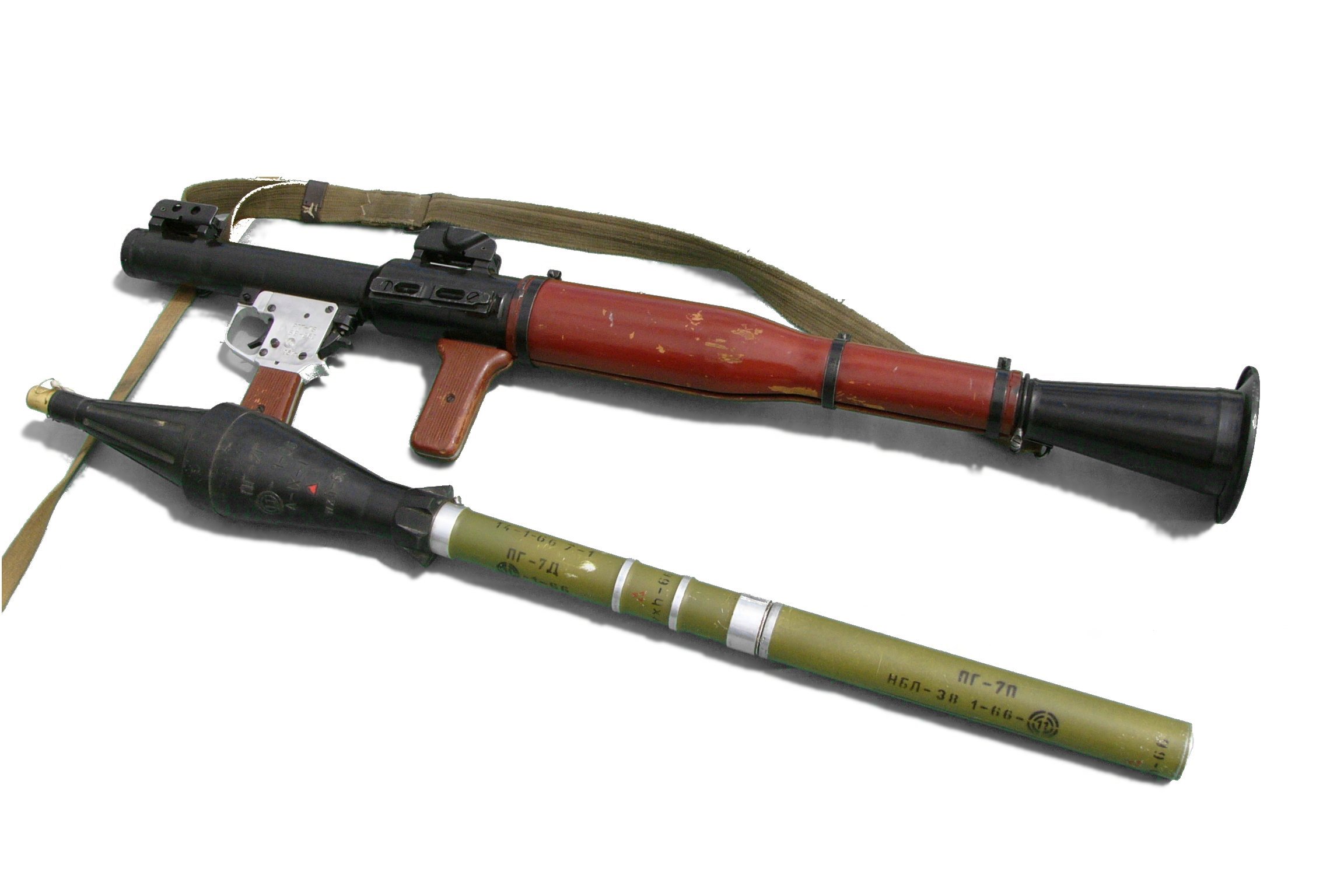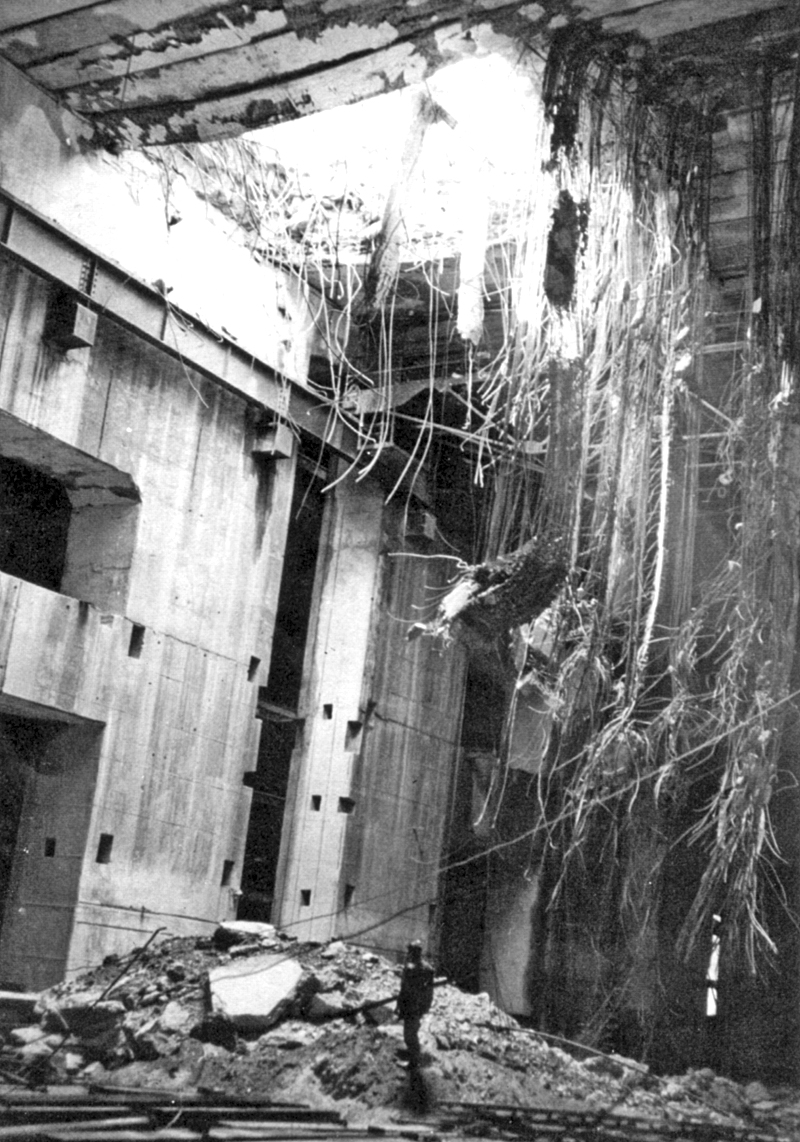|
RPG-27
The RPG-27 is a Soviet single shot disposable grenade launcher. It entered service with the Soviet Army in 1989. History The RPG-27 ''Tavolga'' ('meadow grass') was developed by the State Research and Production Enterprise, Bazalt, as a modern anti-tank grenade launcher designed to defeat modern and future tanks with advanced reactive and composite armor as well as fortified infantry. The RPG-27 was developed by the Soviet Union from the RPG-26. Description The RPG-27 shares a close resemblance with the previous RPG-26 in that it is a man-portable, disposable anti-tank grenade launcher with a single shot capacity. The RPG-27 has a larger diameter round than the RPG-26 which enables the RPG-27 to achieve higher armour penetration performance. The RPG-27 fin stabilised round is a 105 mm tandem-charge HEAT warhead with a range of 200 meters. The round has a stated penetration capability in excess of 650 mm of RHA (after ERA) and 1500 mm of brick or concrete and ... [...More Info...] [...Related Items...] OR: [Wikipedia] [Google] [Baidu] |
Rocket-propelled Grenade Launchers
A rocket-propelled grenade (RPG) is a shoulder-fired missile weapon that launches rockets equipped with an explosive warhead. Most RPGs can be carried by an individual soldier, and are frequently used as anti-tank weapons. These warheads are affixed to a rocket motor which propels the RPG towards the target and they are stabilized in flight with fins. Some types of RPG are reloadable with new rocket-propelled grenades, while others are single-use. RPGs are generally loaded from the front. RPGs with high-explosive anti-tank (HEAT) warheads are very effective against lightly armored vehicles such as armored personnel carriers (APCs) and armored cars. However, modern, heavily-armored vehicles, such as upgraded APCs and main battle tanks, are generally too well-protected (with thick composite or reactive armor) to be penetrated by an RPG, unless less armored sections of the vehicle are exploited. Various warheads are also capable of causing secondary damage to vulnerable system ... [...More Info...] [...Related Items...] OR: [Wikipedia] [Google] [Baidu] |
Thermobaric Weapon
A thermobaric weapon, also called an aerosol bomb, a vacuum bomb or a fuel air explosive (FAE), is a type of explosive that uses oxygen from the surrounding air to generate a high-temperature explosion. The fuel–air explosive is one of the best-known types of thermobaric weapons. Thermobaric weapons are almost 100% fuel and as a result are significantly more energetic than conventional explosives of equal weight. Many types of thermobaric weapons can be fitted to hand-held launchers, and can also be launched from airplanes. The largest Russian bomb contains a charge of approximately 7 tons of a liquid fuel that when detonated creates an explosion of 39.9 tons TNT equivalent. Terminology The term ''thermobaric'' is derived from the Greek words for 'heat' and 'pressure': ''thermobarikos'' (θερμοβαρικός), from ''thermos'' (θερμός) 'hot' + ''baros'' (βάρος) 'weight, pressure' + suffix ''-ikos'' (-ικός) '-ic'. Other terms used for the family of weapon ... [...More Info...] [...Related Items...] OR: [Wikipedia] [Google] [Baidu] |
Bazalt Products
NPO Bazalt (russian: НПО «Базальт») is a weapons manufacturing company in Russia that took over (or continued) the production of weapons such as the RPG-7 after the collapse of the Soviet Union. NPO Bazalt manufactures the RPG-7V2 and the RPG-29. AO NPO Bazalt is included in the state corporation Rostec. History Bazalt was founded in 1916. Over its history, the company created 700 models of ammunition for military use. Bazalt is one of the leading designers and developers of many variants of aircraft bombs, anti-tank and anti-saboteur marine grenade launcher complexes, mortar shells of many variants, and calibers and other kinds of ammunition. The company's most famous product is the RPG-7, developed in the 1960s and used by the armies of over 40 countries, with over one million having been built by the company or on license by 2004. Ammunition developed by Bazalt is used by the armed forces of over 80 countries in the world. Licenses for production of 61 ty ... [...More Info...] [...Related Items...] OR: [Wikipedia] [Google] [Baidu] |
Bazalt
NPO Bazalt (russian: НПО «Базальт») is a weapons manufacturing company in Russia that took over (or continued) the production of weapons such as the RPG-7 after the collapse of the Soviet Union. NPO Bazalt manufactures the RPG-7, RPG-7V2 and the RPG-29. joint-stock company, AO OKB, NPO Bazalt is included in the State corporation (Russia), state corporation Rostec. History Bazalt was founded in 1916. Over its history, the company created 700 models of ammunition for military use. Bazalt is one of the leading designers and developers of many variants of aircraft bombs, anti-tank and anti-saboteur marine grenade launcher complexes, mortar shells of many variants, and calibers and other kinds of ammunition. The company's most famous product is the RPG-7, developed in the 1960s and used by the armies of over 40 countries, with over one million having been built by the company or on license by 2004. Ammunition developed by Bazalt is used by the armed forces of over 80 co ... [...More Info...] [...Related Items...] OR: [Wikipedia] [Google] [Baidu] |
Soviet Union
The Soviet Union,. officially the Union of Soviet Socialist Republics. (USSR),. was a List of former transcontinental countries#Since 1700, transcontinental country that spanned much of Eurasia from 1922 to 1991. A flagship communist state, it was nominally a Federation, federal union of Republics of the Soviet Union, fifteen national republics; in practice, both Government of the Soviet Union, its government and Economy of the Soviet Union, its economy were highly Soviet-type economic planning, centralized until its final years. It was a one-party state governed by the Communist Party of the Soviet Union, with the city of Moscow serving as its capital as well as that of its largest and most populous republic: the Russian Soviet Federative Socialist Republic, Russian SFSR. Other major cities included Saint Petersburg, Leningrad (Russian SFSR), Kyiv, Kiev (Ukrainian Soviet Socialist Republic, Ukrainian SSR), Minsk (Byelorussian Soviet Socialist Republic, Byelorussian SSR), Tas ... [...More Info...] [...Related Items...] OR: [Wikipedia] [Google] [Baidu] |
RPG-26
The RPG-26 ''Aglen'' is a disposable anti-tank rocket launcher developed by the Soviet Union. It fires a single-stage rocket with jack-knife fins, which unfold after launch. The rocket carries a diameter high explosive anti-tank single shaped charge warhead capable of penetrating of armour, of reinforced concrete or of brickwork. It has a maximum effective range of around . The similar sized rocket features a slightly heavier and more powerful HEAT warhead and more powerful rocket engine. The limited extension of the RPG-22 launch tube was found of little use. Therefore the RPG-26 has a rigid non-telescoping launch tube. Variants RShG-2 The RShG-2 (Russian: , ''Reaktivnaya Shturmovaya Granata'', Rocket-propelled Assault Grenade ) ''Aglen-2'' (Аглень-2) is a RPG-26 variant with thermobaric warhead. RShG-2 is heavier than the RPG-26 at and has a reduced direct fire range of . It is intended to be used against infantry and structures rather than armoured vehicles. ... [...More Info...] [...Related Items...] OR: [Wikipedia] [Google] [Baidu] |
Cold War Anti-tank Rockets Of The Soviet Union
Cold is the presence of low temperature, especially in the atmosphere. In common usage, cold is often a subjective perception. A lower bound to temperature is absolute zero, defined as 0.00K on the Kelvin scale, an absolute thermodynamic temperature scale. This corresponds to on the Celsius scale, on the Fahrenheit scale, and on the Rankine scale. Since temperature relates to the thermal energy held by an object or a sample of matter, which is the kinetic energy of the random motion of the particle constituents of matter, an object will have less thermal energy when it is colder and more when it is hotter. If it were possible to cool a system to absolute zero, all motion of the particles in a sample of matter would cease and they would be at complete rest in the classical sense. The object could be described as having zero thermal energy. Microscopically in the description of quantum mechanics, however, matter still has zero-point energy even at absolute zero, because ... [...More Info...] [...Related Items...] OR: [Wikipedia] [Google] [Baidu] |
Modern Anti-tank Rockets Of Russia
Modern may refer to: History * Modern history ** Early Modern period ** Late Modern period *** 18th century *** 19th century *** 20th century ** Contemporary history * Moderns, a faction of Freemasonry that existed in the 18th century Philosophy and sociology * Modernity, a loosely defined concept delineating a number of societal, economic and ideological features that contrast with "pre-modern" times or societies ** Late modernity Art * Modernism ** Modernist poetry * Modern art, a form of art * Modern dance, a dance form developed in the early 20th century * Modern architecture, a broad movement and period in architectural history * Modern music (other) Geography *Modra, a Slovak city, referred to in the German language as "Modern" Typography * Modern (typeface), a raster font packaged with Windows XP * Another name for the typeface classification known as Didone (typography) * Modern, a generic font family name for fixed-pitch serif and sans serif fonts (for exa ... [...More Info...] [...Related Items...] OR: [Wikipedia] [Google] [Baidu] |
Anti-tank Rockets
Anti-tank warfare originated from the need to develop technology and tactics to destroy tanks during World War I. Since the Triple Entente deployed the first tanks in 1916, the German Empire developed the first anti-tank weapons. The first developed anti-tank weapon was a scaled-up bolt-action rifle, the Mauser 1918 T-Gewehr, that fired a 13mm cartridge with a solid bullet that could penetrate the thin armor of tanks of the time and destroy the engine or ricochet inside, killing occupants. Because tanks represent an enemy's strong force projection on land, military strategists have incorporated anti-tank warfare into the doctrine of nearly every combat service since. The most predominant anti-tank weapons at the start of World War II in 1939 included the tank-mounted gun, anti-tank guns and anti-tank grenades used by the infantry, and ground-attack aircraft. Anti-tank warfare evolved rapidly during World War II, leading to the inclusion of infantry-portable weapons such as ... [...More Info...] [...Related Items...] OR: [Wikipedia] [Google] [Baidu] |
Bunker Buster
A bunker buster is a type of munition that is designed to penetrate hardened targets or targets buried deep underground, such as military bunkers. Armor piercing shells Germany Röchling shells were bunker-busting artillery shells, developed by the German engineer August Cönders, based on the theory of increasing sectional density to improve penetration. They were tested in 1942 and 1943 against the Belgian Fort d'Aubin-Neufchâteau. Aircraft delivered bombs World War II Germany In World War II the Luftwaffe developed a series of unguided rocket-propelled armor-piercing bombs for use against shipping and fortifications. United Kingdom In World War II, the British designer Barnes Wallis, already famous for inventing the bouncing bomb, designed two bombs that would become the conceptual predecessors of modern bunker busters: the five tonne Tallboy and the ten tonne Grand Slam. These were "Earthquake" bombs—a concept he had first proposed in 1939. The designs were ... [...More Info...] [...Related Items...] OR: [Wikipedia] [Google] [Baidu] |


_sunk_as_target_with_FAE_1972.jpg)



